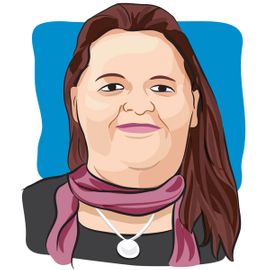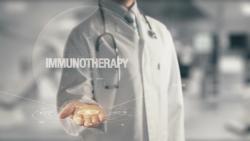- About Us
- Advertise / Support
- Contact Us
- CancerNetwork.com
- TargetedOnc.com
- OncLive.com
- OncNursingNews.com
- Terms & Conditions
- Privacy
- Do Not Sell My Information
© 2025 MJH Life Sciences™ and CURE - Oncology & Cancer News for Patients & Caregivers. All rights reserved.
Immunotherapy: Seeking a Cure With Caution

Kim was a caregiver for her sister while she battled stage 4 Hodgkin Lymphoma for nearly five years, from diagnosis through an autologous transplant. She turned her experience into change and has since become an activist in finding a cure for cancer. Kim has worked in politics and assisted in the passing of numerous legislative pieces impacting patients with cancer and their families. She is an activist in the field of oncology, nursing and beyond. Additionally, she is a volunteer and champion for a cure with the Leukemia and Lymphoma Society's Light the Night Campaign. Kim has shared her experiences with cancer as a contributor with Cure and through public speaking engagements throughout the United States.
Immunotherapy agents are promising in the treatment of cancer, but also come with some awful side effects.
When dealing with cancer, I believe that it is important to have both hope and optimism. For a while, it felt like the field of oncology rarely ever changed, but this is no longer the case. Immunotherapy is one of the biggest changes that we have seen in the last decade. My sister was lucky enough to be one of the many patients to have benefited from receiving the immunotherapy agent Opdivo.
There were some common side effects we were told to look out for, the most common one being skin reaction. For my sister, it was quite mild, but did occur when we began dosing. However, it was still heartbreaking. Not only was she facing yet another setback, but we did not know how bad it would be and if she could continue treatments.
It was a hard reality to face when we knew that in severe cases, the drug would be discontinued. That is obviously a difficult place to find yourself in, because for patients like my sister, that can ultimately mean dying. For us, it was made even harder by the fact that we knew it was working. It was attacking the cancer when all other treatments had failed, yet it was also beginning to attack her in other ways.
In most severe cases, it can also mean organ failure, pulmonary distress or secondary infections from wounds caused by a more severe dermatological reaction. While killing the cancer, it can also kill a patient before a remission is gained. Rare to say when speaking of my sister’s cancer journey, but she was lucky. Her reaction was never worse than a mild rash, and so she was able to continue her treatments.
Like cancer, reactions are best when caught early, as it was with my sister. While some reactions cannot be reversed, not all of them can. Some antibiotics and topical creams can be successful when the reaction is mild in the earliest of stages. My sister was given steroid cream and ultimately was able to continue dosing on a more spread-apart schedule. This was a blessing because after just seven doses, she was able to proceed to the life-saving bone marrow transplant that she received.
Just as new as these ground-breaking immunotherapies are, so are the treatments to combat their side effects. I count us lucky that my sister is cured of cancer. Nothing can ever change how unimaginably grateful I feel since she is still here after all we endured. Yet in being cured, she has been left with a host of complications that she will live with for the rest of her life. And unlike the cancer, there is no cure for many of them.
So while immunotherapies offer many promising things and come with the potential for incredible reward, they can also come with a cost. I think that caution is important as we begin dosing these new remedies in to countless more cancer patients in the hopes that they gain that ever-elusive cure just as my sister was able to do.
Related Content:



